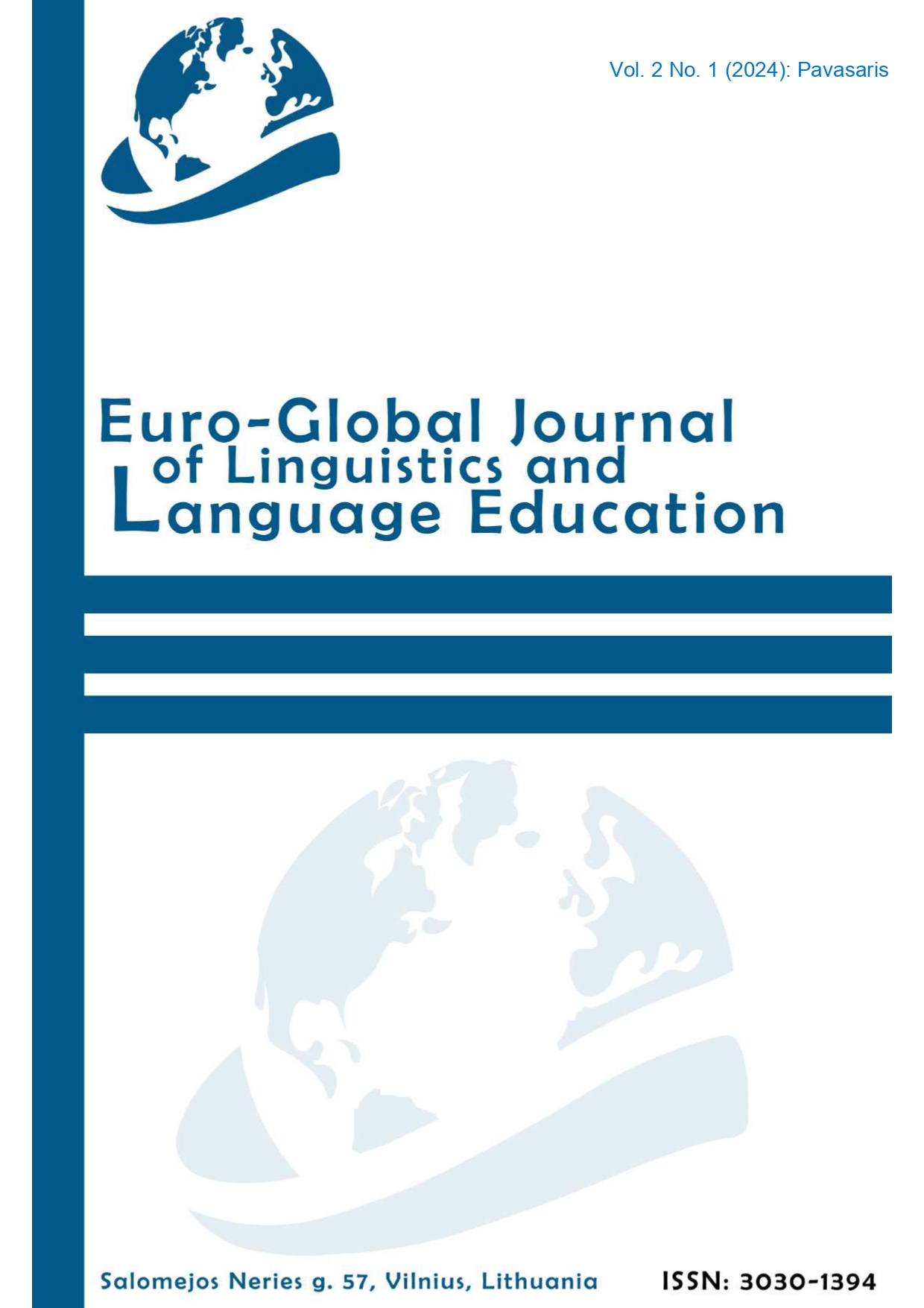Communicative Approach in Foreign Language Teaching: Advantages and Limitations
DOI:
https://doi.org/10.69760/egjlle.250009Keywords:
Communicative Language Teaching, fluency, task-based instruction, language assessment, foreign language educationAbstract
The Communicative Language Teaching (CLT) approach has transformed foreign language education by prioritizing fluency, interaction, and real-world communication over rote memorization and grammar drills. This method promotes student-centered learning, task-based instruction, and the use of authentic materials, making language acquisition more engaging and effective. However, despite its advantages, CLT faces several challenges, including limited emphasis on grammatical accuracy, difficulties in assessment, and resistance in non-native English-speaking contexts. Traditional grammar-based testing often fails to measure communicative competence, highlighting the need for more effective assessment models. Additionally, teacher preparedness and classroom management remain barriers to CLT’s full implementation, especially in large class settings and regions where traditional teaching methods dominate. Future developments in blended learning, adaptive teaching strategies, and AI-driven assessment tools could help bridge the gap between fluency and linguistic accuracy, ensuring that learners develop both communication skills and structural competence. This paper explores the advantages and limitations of CLT, discussing potential solutions for integrating communicative approaches with structured learning methodologies to create a balanced and effective language teaching framework.
References
Alisoy, H. (2023). Enhancing Understanding of English Phrasal Verbs in First-Year ELT Students Through Cognitive-Linguistic Methods.
Asadova, B. (2025). Effective Strategies for Teaching Phonetics in the Classroom. Global Spectrum of Research and Humanities , 1(1), 12-18. https://doi.org/10.69760/gsrh.0101202402
Ashrafova, I. (2024). Teaching English to Economy and Finance Majors at Nakhchivan State University.
Brandl, K. (2008). Communicative language teaching in action.
Canale, M., & Swain, M. (1980). Theoretical bases of com-municative approaches to second language teaching and testing. Applied linguistics, 1(1), 1-47.
Dörnyei, Z. (2009). The 2010s Communicative language teaching in the 21st century: The ‘principled communicative approach’. Perspectives, 36(2), 33-43.
Dos Santos, L. M. (2020). The Discussion of Communicative Language Teaching Approach in Language Classrooms. Journal of Education and e-Learning Research, 7(2), 104-109.
Hajiyeva, B. (2024). Overcoming apathy: Innovative strategies for motivating reluctant learners in higher education. ECONOMIC SCIENCES, 57.
Hiep, P. H. (2007). Communicative language teaching: Unity within diversity. ELT journal, 61(3), 193-201.
Jacobs, G. M., & Farrell, T. S. (2003). Understanding and implementtng the CLT (Communicative Language Teaching) paradigm. RELC journal, 34(1), 5-30.
Lee, J. F., & VanPatten, B. (1995). Making Communicative Language Teaching Happen. Volume 1: Directions for Language Learning and Teaching. McGraw-Hill, Inc., 860 Taylor Station Rd., Blacklick, OH 43004-0545; toll-free: 800-722-4726.
Mammadova, I. (2024). Understanding the Function of Past Participles in Complex Sentences. Journal of Azerbaijan Language and Education Studies, 1(1), 1-21. https://doi.org/10.69760/jales.2024.00100
Nakhchivan, E. M. (2023). Phonetics and Phonology at NSU: Integrating the Eclectic Method in Transformative Student Research. Web of Semantics: Journal of Interdisciplinary Science, 1(2), 25-29.
Richards, J. C. (2005). Communicative language teaching today. Singapore: SEAMEO Regional Language Centre.
Sadiqzade, Z. (2024). Fostering Emotional Intelligence in Language Learners. Journal of Azerbaijan Language and Education Studies, 1(1), 67-76. https://doi.org/10.69760/jales.2024.00106
Sato, K., & Kleinsasser, R. C. (1999). Communicative language teaching (CLT): Practical understandings. The Modern Language Journal, 83(4), 494-517.
Savignon, S. J. (1987). Communicative language teaching. Theory into practice, 26(4), 235-242.
Savignon, S. J. (2007). Beyond communicative language teaching: What's ahead?. Journal of pragmatics, 39(1), 207-220.
Singhal, M. (1997). The Internet and foreign language education: Benefits and challenges. The internet TESL journal, 3(6), 107.
Warschauer, M., & Meskill, C. (2013). Technology and second language teaching. In Handbook of undergraduate second language education (pp. 303-318). Routledge.
Yu, L. (2001). Communicative language teaching in China: Progress and resistance. TESOL quarterly, 35(1), 194-198.
Downloads
Published
Issue
Section
License
Copyright (c) 2025 EuroGlobal Journal of Linguistics and Language Education

This work is licensed under a Creative Commons Attribution-NonCommercial-NoDerivatives 4.0 International License.





